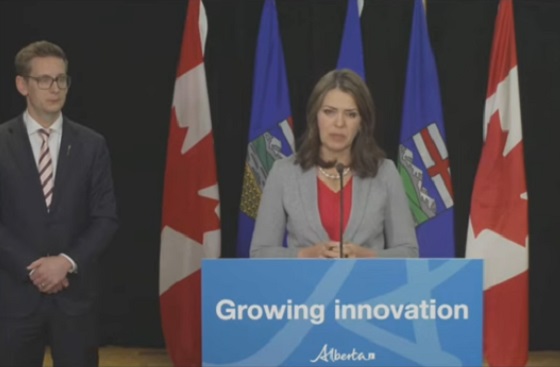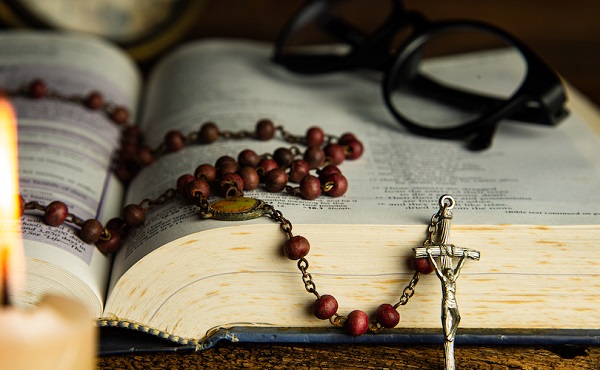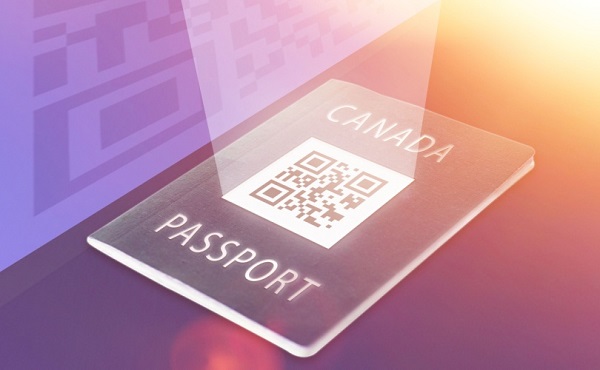Alberta
Alberta laying out the welcome mat for AI Data Centres

Fueling innovation through AI data centre attraction
Alberta’s government is aiming for Alberta to become North America’s destination of choice for Artificial Intelligence (AI) data centre investment.
The AI data centre attraction strategy identifies three pillars that create the foundation of Alberta’s work to position itself as a competitive player in the global AI landscape: power capacity, sustainable cooling and economic diversification. In each of these strategic areas, there are policy and regulatory levers required in addition to other steps Alberta’s government is taking to ensure Alberta is the most attractive and competitive destination for this emerging sector. The entire approach prioritizes competitive advantages, economic integration, market stability and keeping utilities reliable and affordable.
“Artificial intelligence is behind all the newest technologies we rely on to make our lives better, simpler, safer. There’s incredible opportunity around artificial intelligence and we are unafraid to dream big. This strategy will position Alberta as the place to invest and build AI data centres, further building on our reputation as a province with no limit to innovation and opportunity.”
The world’s largest AI companies are in search of opportunities to build and energize their data centres. Alberta, with its abundant natural gas supply and world-class power industry, is highly attractive to AI data centre projects. The province’s unique competitive power market opens the door to many opportunities for AI companies to partner with Alberta’s talented and experienced electricity sector. The sector has decades of experience in finding innovative solutions to meet industry’s power needs while maintaining a balance of affordability and reliability in a system that Albertans count on.
AI data centres generate a lot of heat and require cooling. The strategy encourages operators to determine the cooling technology best suited for their needs, water license availability and regional and project circumstance. Additionally, Alberta’s climate offers significant advantages for AI data centres because of the province’s cold winters, which would reduce the need for artificial cooling systems.
Alberta’s government seeks to ensure Albertans benefit from AI data centres and is committed to ensuring economic growth and shared prosperity while ensuring Alberta continues to have the lowest taxes in Canada and is competitive across North America.
“Alberta is uniquely positioned to capture the AI data center opportunity, leveraging our vast natural gas resources and pro-business environment to create thousands of high-quality jobs and attract billions in investment. This strategy is not just about building infrastructure; it’s about fostering innovation and establishing Alberta as a hub for high-tech industries, driving economic growth and supporting critical public services like healthcare and education.”
Alberta is committed to fostering innovation and ensuring technology development aligns with industry needs. The strategy was developed after extensive consultation with organizations and businesses in the AI space and market participants.
“For AI companies to build and scale in Alberta, they need access to computing power. Data centers are economic growth engines that provide the computing power AI companies need to develop and deploy their innovations. grow their companies and stimulate the local economies. Beyond its natural advantages, Alberta boasts a robust AI ecosystem anchored by world-class research and talent. Many of the algorithms the world’s data centers are running on have been pioneered by Amii researchers right here in Alberta. The opportunity for those companies to be close to the source of some of the leading AI research gives them a competitive advantage in being at the forefront of what is coming next.”
Quick facts
- Over the past several months, Technology and Innovation met with AI data centre builders and operators, power generators, natural resource sector participants, telecommunications companies and municipalities actively pursuing AI data centres.
- AI data centre market size is anticipated to more than double by 2030 to more than $820 billion. (P&S Market Research)
- Alberta Electricity System Operator (AESO) has 12 data centre projects on their project list totalling 6,455 MW of load.
- Most of the power demand on the AESO project list is from data centers.
- Currently there is about 1,000 MW of additional dispatchable generation over Alberta’s current needs. This amount is dynamic and may change due to factors such as generation retirements, outages, derates, or new additions.
Related information
Alberta
Here’s why city hall should save ‘blanket rezoning’ in Calgary

From the Fraser Institute
By Tegan Hill and Austin Thompson
According to Calgarians for Thoughtful Growth (CFTG)—an organization advocating against “blanket rezoning”— housing would be more affordable if the mayor and council restricted what homes can be built in Calgary and where. But that gets the economics backwards.
Blanket rezoning—a 2024 policy that allowed homebuilders to construct duplexes, townhomes and fourplexes in most neighbourhoods—allowed more homebuilding, giving Calgarians more choice, and put downward pressure on prices. Mayor Farkas and several councillors campaigned on repealing blanket rezoning and on December 15 council will debate a motion that could start that process. As Calgarians debate the city’s housing rules, residents should understand the trade-offs involved.
When CFTG claims that blanket rezoning does “nothing” for affordability, it ignores a large body of economic research showing the opposite.
New homes are only built when they can be sold to willing homebuyers for a profit. Restrictions that limit the range of styles and locations for new homes, or that lock denser housing behind a long, costly and uncertain municipal approval process, inevitably eliminate many of these opportunities. That means fewer new homes are built, which worsens housing scarcity and pushes up prices. This intuitive story is backed up by study after study. An analysis by Canada’s federal housing agency put it simply: “higher residential land use regulation seems to be associated with lower housing affordability.”
CFTG also claims that blanket rezoning merely encourages “speculation” (i.e. buying to sell in the short-term for profit) by investors. Any profitable housing market may invite some speculative activity. But homebuilders and investors can only survive financially if they make homes that families are willing to buy or rent. The many Calgary families who bought or rented a new home enabled by blanket rezoning did so because they felt it was their best available option given its price, amenities and location—not because they were pawns in some speculative game. Calgarians benefit when they are free to choose the type of home and neighbourhood that best suits their family, rather than being constrained by the political whims of city hall.
And CFTG’s claim that blanket rezoning harms municipal finances also warrants scrutiny. More specifically, CFTG suggests that developers do not pay for infrastructure upgrades in established neighbourhoods, but this is simply incorrect. The City of Calgary charges an “Established Area Levy” to cover the cost of water and wastewater upgrades spurred by redevelopment projects—raising $16.5 million in 2024 alone. Builders in the downtown area must pay the “Centre City Levy,” which funds several local services (and generated $2.5 million in 2024).
It’s true that municipal fees on homes in new communities are generally higher, but that reflects the reality that new communities require far more new pipes, roads and facilities than established neighbourhoods.
Redeveloping established areas of the city means more residents can make use of streets, transit and other city services already in place, which is often the most cost-effective way for a city to grow. The City of Calgary’s own analysis finds that redevelopment in established neighbourhoods saves billions of taxpayer dollars on capital and operating costs for city services compared to an alternative scenario where homebuilding is concentrated in new suburban communities.
An honest debate about blanket rezoning ought to acknowledge the advantages this system has in promoting housing choice, housing affordability and the sustainability of municipal finances.
Clearly, many Calgarians felt blanket rezoning was undesirable when they voted for mayoral and council candidates who promised to change Calgary’s zoning rules. However, Calgarians also voted for a mayor who promised that more homes would be built faster, and at affordable prices—something that will be harder to achieve if city hall imposes tighter restrictions on where and what types of homes can be built. This unavoidable tension should be at the heart of the debate.
CFTG is promoting a comforting fairy tale where Calgary can tighten restrictions on homebuilding without limiting supply or driving up prices. In reality, no zoning regime delivers everything at once—greater neighbourhood control inevitably comes at the expense of housing choice and affordability. Calgarians—including the mayor and council—need a clear understanding of the trade-offs.
Alberta
The case for expanding Canada’s energy exports

From the Canadian Energy Centre
For Canada, the path to a stronger economy — and stronger global influence — runs through energy.
That’s the view of David Detomasi, a professor at the Smith School of Business at Queen’s University.
Detomasi, author of Profits and Power: Navigating the Politics and Geopolitics of Oil, argues that there is a moral case for developing Canada’s energy, both for Canadians and the world.
CEC: What does being an energy superpower mean to you?
DD: It means Canada is strong enough to affect the system as a whole by its choices.
There is something really valuable about Canada’s — and Alberta’s — way of producing carbon energy that goes beyond just the monetary rewards.
CEC: You talk about the moral case for developing Canada’s energy. What do you mean?
DD: I think the default assumption in public rhetoric is that the environmental movement is the only voice speaking for the moral betterment of the world. That needs to be challenged.
That public rhetoric is that the act of cultivating a powerful, effective economic engine is somehow wrong or bad, and that efforts to create wealth are somehow morally tainted.
I think that’s dead wrong. Economic growth is morally good, and we should foster it.
Economic growth generates money, and you can’t do anything you want to do in social expenditures without that engine.
Economic growth is critical to doing all the other things we want to do as Canadians, like having a publicly funded health care system or providing transfer payments to less well-off provinces.
Over the last 10 years, many people in Canada came to equate moral leadership with getting off of oil and gas as quickly as possible. I think that is a mistake, and far too narrow.
Instead, I think moral leadership means you play that game, you play it well, and you do it in our interest, in the Canadian way.
We need a solid base of economic prosperity in this country first, and then we can help others.
CEC: Why is it important to expand Canada’s energy trade?
DD: Canada is, and has always been, a trading nation, because we’ve got a lot of geography and not that many people.
If we don’t trade what we have with the outside world, we aren’t going to be able to develop economically, because we don’t have the internal size and capacity.
Historically, most of that trade has been with the United States. Geography and history mean it will always be our primary trade partner.
But the United States clearly can be an unreliable partner. Free and open trade matters more to Canada than it does to the U.S. Indeed, a big chunk of the American people is skeptical of participating in a global trading system.
As the United States perhaps withdraws from the international trading and investment system, there’s room for Canada to reinforce it in places where we can use our resource advantages to build new, stronger relationships.
One of these is Europe, which still imports a lot of gas. We can also build positive relationships with the enormous emerging markets of China and India, both of whom want and will need enormous supplies of energy for many decades.
I would like to be able to offer partners the alternative option of buying Canadian energy so that they are less reliant on, say, Iranian or Russian energy.
Canada can also maybe eventually help the two billion people in the world currently without energy access.
CEC: What benefits could Canadians gain by becoming an energy superpower?
DD: The first and primary responsibility of our federal government is to look after Canada. At the end of the day, the goal is to improve Canada’s welfare and enhance its sovereignty.
More carbon energy development helps Canada. We have massive debt, an investment crisis and productivity problems that we’ve been talking about forever. Economic and job growth are weak.
Solving these will require profitable and productive industries. We don’t have so many economic strengths in this country that we can voluntarily ignore or constrain one of our biggest industries.
The economic benefits pay for things that make you stronger as a country.
They make you more resilient on the social welfare front and make increasing defence expenditures, which we sorely need, more affordable. It allows us to manage the debt that we’re running up, and supports deals for Canada’s Indigenous peoples.
CEC: Are there specific projects that you advocate for to make Canada an energy superpower?
DD: Canada’s energy needs egress, and getting it out to places other than the United States. That means more transport and port facilities to Canada’s coasts.
We also need domestic energy transport networks. People don’t know this, but a big chunk of Ontario’s oil supply runs through Michigan, posing a latent security risk to Ontario’s energy security.
We need to change the perception that pipelines are evil. There’s a spiderweb of them across the globe, and more are being built.
Building pipelines here, with Canadian technology and know-how, builds our competitiveness and enhances our sovereignty.
Economic growth enhances sovereignty and provides the resources to do other things. We should applaud and encourage it, and the carbon energy sector can lead the way.
-

 Automotive2 days ago
Automotive2 days agoThe $50 Billion Question: EVs Never Delivered What Ottawa Promised
-

 C2C Journal2 days ago
C2C Journal2 days agoWisdom of Our Elders: The Contempt for Memory in Canadian Indigenous Policy
-

 Alberta2 days ago
Alberta2 days agoAlberta introducing three “all-season resort areas” to provide more summer activities in Alberta’s mountain parks
-

 Agriculture2 days ago
Agriculture2 days agoGrowing Alberta’s fresh food future
-

 Business18 hours ago
Business18 hours agoAlbertans give most on average but Canadian generosity hits lowest point in 20 years
-

 Censorship Industrial Complex2 days ago
Censorship Industrial Complex2 days agoConservative MP calls on religious leaders to oppose Liberal plan to criminalize quoting Scripture
-

 Digital ID8 hours ago
Digital ID8 hours agoCanada considers creating national ID system using digital passports for domestic use
-

 Crime1 day ago
Crime1 day agoU.S. seizes Cuba-bound ship with illicit Iranian oil history












